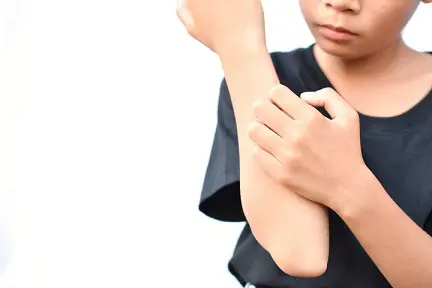Atopic dermatitis (AD), commonly referred to as eczema, is a chronic ailment of the skin characterised by itchy and dry skin surface. The term atopic refers to those diseases that are caused by allergic reactions, while dermatitis is a condition affecting the skin.
The most widely noticeable symptoms are itchy and red rashes, which are affected by internal and external factors that ultimately increase blood flow, causing inflammation and an urge to itch. It is hard to resist the urge to itch the affected area, and while it may provide relief at the moment, it can worsen the inflammation and lead to more severe skin infections. More specific symptoms differ with age.
-
In Infants
Newborn babies can experience rashes on the scalp or cheeks, and even bubbling and fluid leakage from the rash. The dry and itchy skin can cause difficulty in sleeping, and infants may develop infections from scratching.
-
In Children
Older children may notice rashes on their elbows, knees or both, and scaly patches on the edges of the rashes. Their skin may feel leathery and thick, and the rashes could even surface on their face and neck, especially around the eyes. The skin could also become lighter or darker in some spots.
READ: The Significance of Eating Healthy During a High-Risk Pregnancy
The American Academy of Dermatology (AAD) says that 90% of people who develop AD do so before the age of 5, and it is rare for someone to develop it in adulthood if they did not have it as a child. It has a strong genetic contribution, and a patient with atopic dermatitis will most likely have a family member with the same disease, asthma and allergies of some sort.
Doctors diagnose atopic dermatitis by enquiring about your child’s symptoms and medical history. While there is no specific test for diagnosing AD, doctors will order blood tests to check for levels of immunoglobulin (IgE), which is very high in children with AD. Other tests may be conducted on the skin to check for allergies or any other unknown conditions.
While there is no cure for atopic dermatitis, the condition can be managed depending on the severity, by controlling the redness and swelling, adding moisture and preventing the spread of infections. Some measures for the same include avoiding irritants specified by the doctor, regular baths in lukewarm water, and use of good quality moisturisers. Other options include over-the-counter ointments or antibiotics, antihistamines and in some cases phototherapy.



